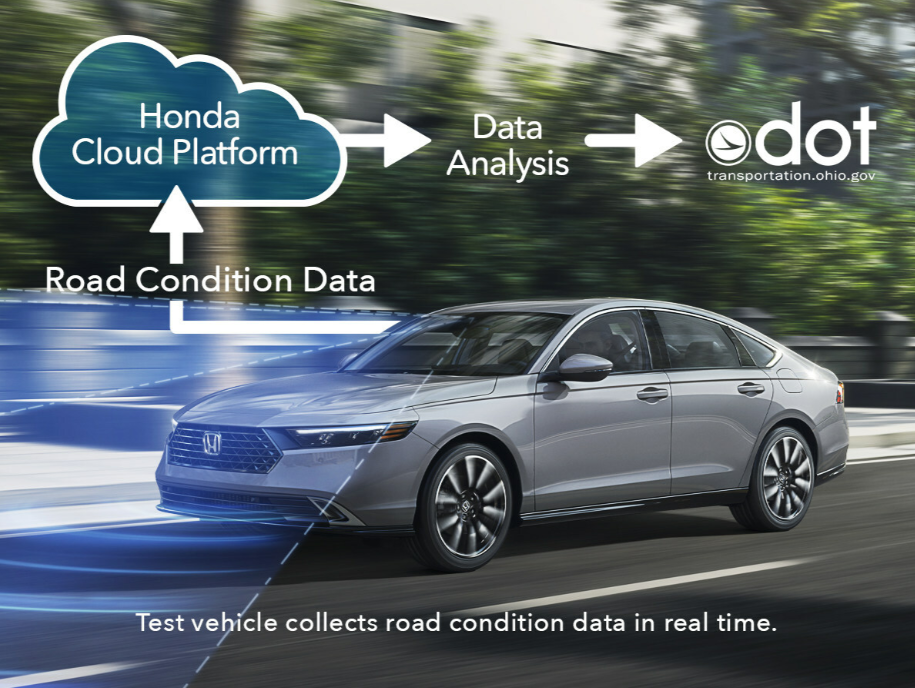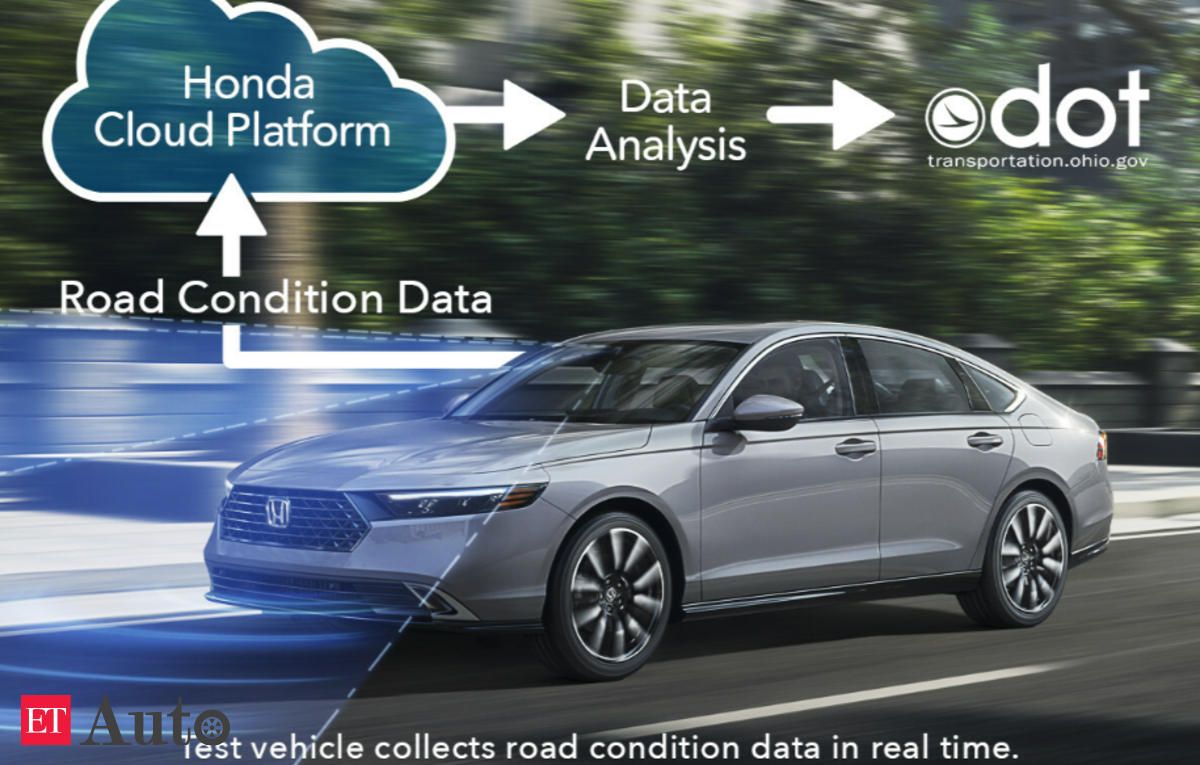
New Delhi: DriveOhio, the smart mobility hub of The Ohio Department of Transportation (ODOT), has awarded over USD 700,000 for a two-year research project led by Honda and three technology partners – i-Probe Inc., The University of Cincinnati, and Parsons.
The partners will develop a road condition management system that will use vehicle-generated data to identify and report hazardous road conditions in Ohio. Honda will lead the project, leveraging the research it conducted in 2022 and the Honda Drive Data Service* from Honda Motor Co., Ltd., with the funding to cover project work by the three partners.
In addition to increased efficiencies and potential cost savings for the state of Ohio, the project could help make roads safer and reduce the cost to consumers associated with vehicle damage due to road hazards. ODOT is responsible for nearly 50,000 lane miles and almost 45,000 bridges across the state. Through early identification of roadway issues like potholes or damaged guardrail, ODOT’s maintenance crews may be able to respond faster and make repairs before conditions worsen. Furthermore, the vehicle-generated data could instantly link inspectors to near real-time information, potentially reducing the need for time-consuming visual inspections.The initiative will build on a pilot program conducted by the Honda Research Institute in 2022, which evaluated a road condition management system using GPS coordinates and cameras to collect real-time road condition information.
During the new two-year project, Honda test vehicles equipped with Advanced Driver Assistive Systems (ADAS) will collect road condition data on select routes that will be analyzed and evaluated to pinpoint roadway damage and inform road maintenance operations in Ohio. In the future, ADAS-equipped vehicles could become part of an active road maintenance system that collects anonymized road hazard information for analysis and appropriate action by road maintenance crews.
Honda has been a leader in the U.S. in advancing connected vehicle and connected infrastructure research and pilot programs. By empowering drivers to participate and contribute to building a safer and better roadway, this will significantly enhance the customer experience while potentially improving the efficiency of maintenance work for road operators like ODOT.
Scope of two-year project
Working closely with ODOT, the partner companies will integrate their respective technologies with Honda test vehicles for data collection and analysis of the roads located in rural and urban areas. The project will focus on the following roadway conditions:
·Roadway striping deficiencies that affect some driver assistance features, such as lane-keeping assist functions
·Pothole development, including size and location
·Ride quality of the road, regardless of the vehicle’s age or condition
·Guardrail and cable road barrier damage
·Road sign wear, including missing signs
·Condition of berms, including the percentage and depth of drop off
Honda and the partner companies will provide the roadway condition data to ODOT through a web dashboard. ODOT will use the data to cross-reference its regular visual inspections. The results of the analysis will be used to enhance the machine learning algorithm Honda uses to generate the web-based dashboards. After the project, ODOT will evaluate the possibilities and value-add for long-term use of such data for maintenance as well as for other ODOT operations.
“As transportation evolves and modern vehicles become more advanced, ODOT is excited to investigate new ways to apply technology and maximize efficiency for our crews. Integrating vehicle data into our operations has the potential to be a game-changer when it comes to better serving Ohio drivers and increasing roadway safety for all,” DriveOhio Executive Director Preeti Choudhary said. “









